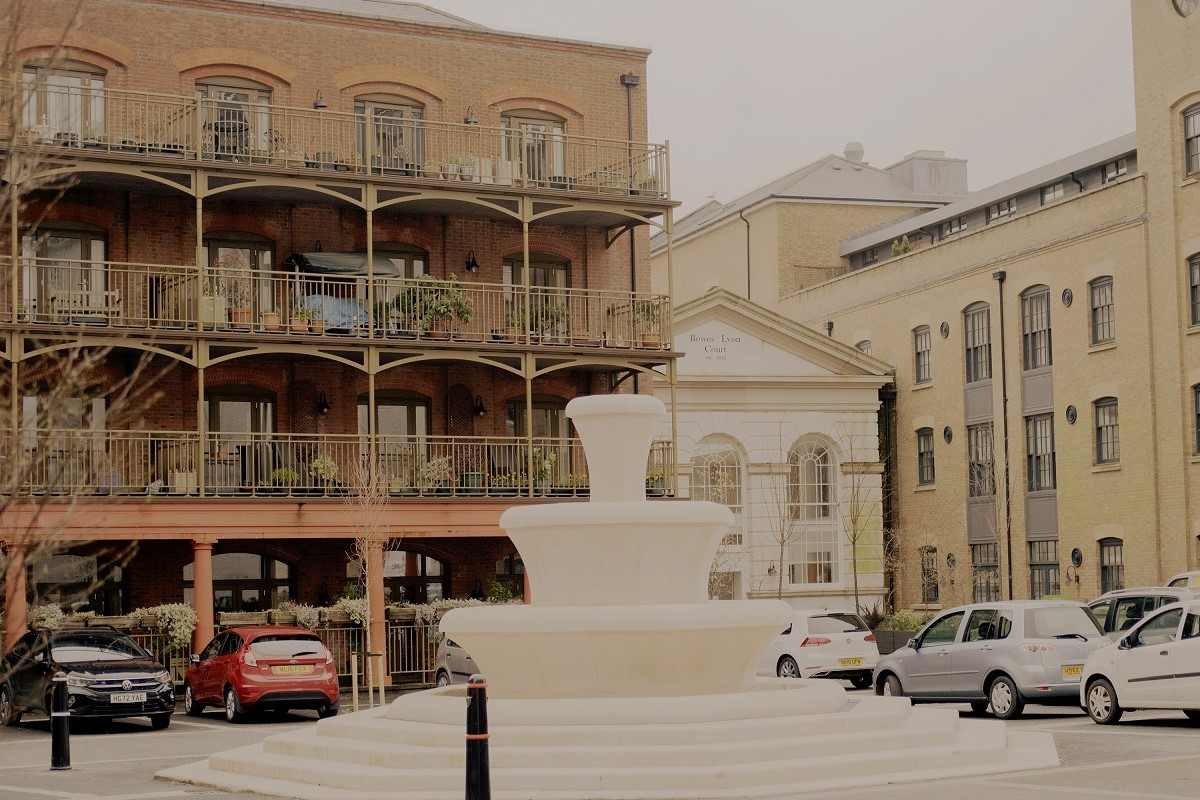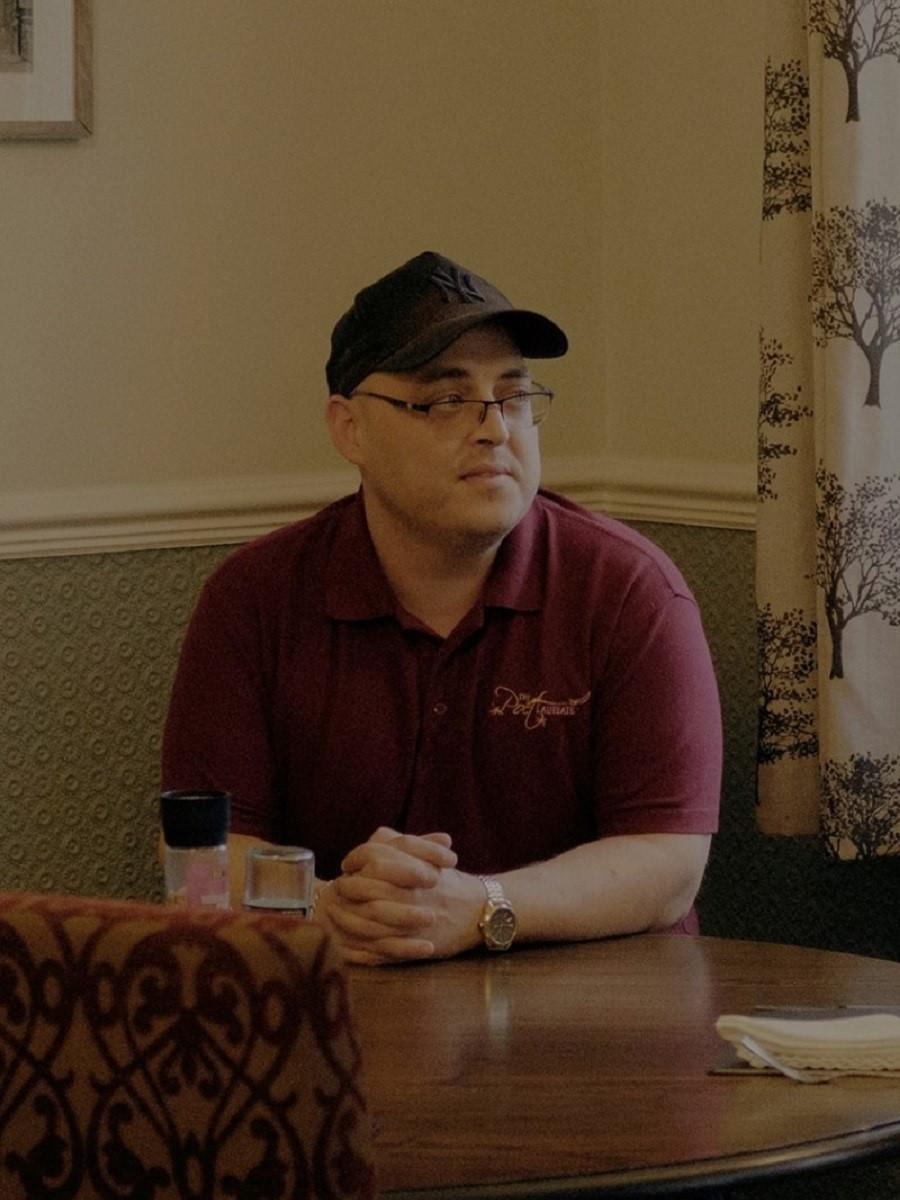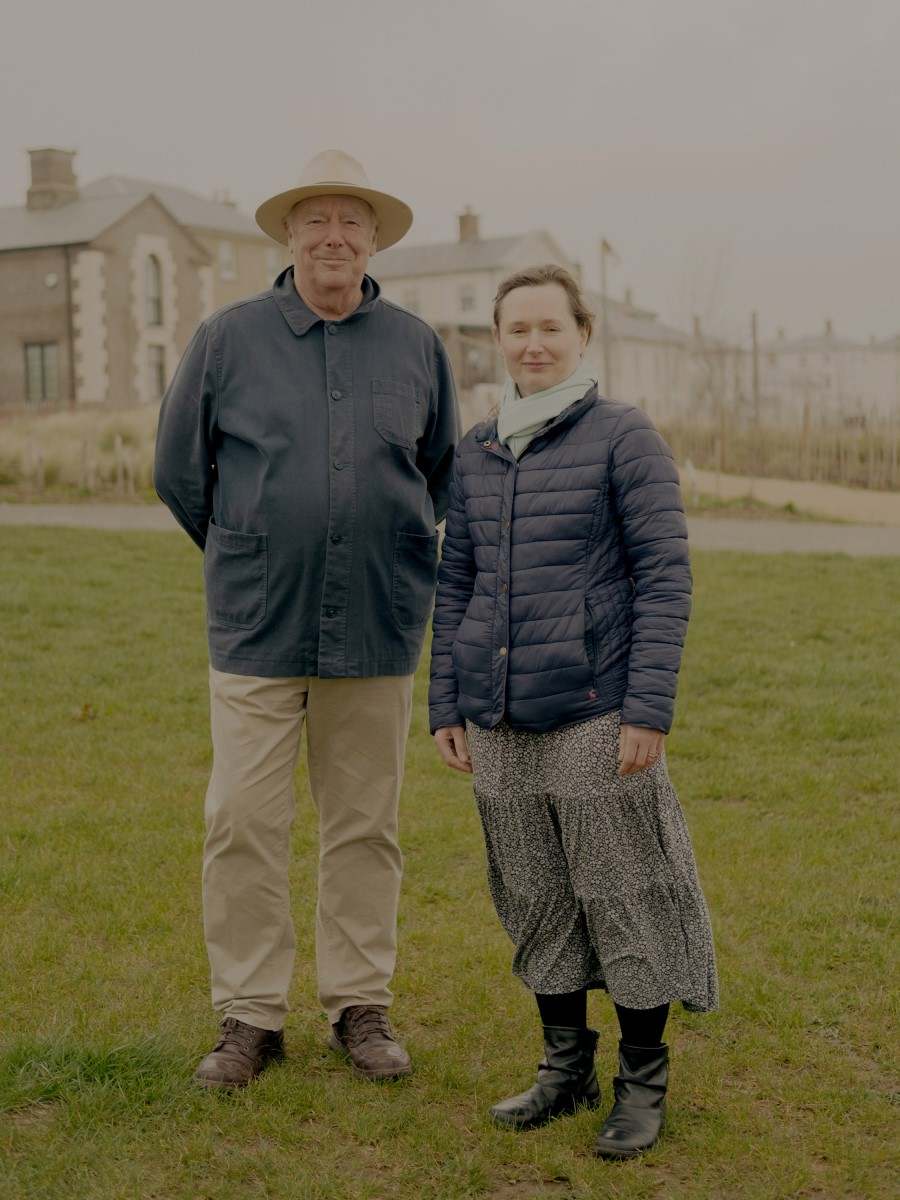
The apartments of a retirement community overlook Queen Mother Square in Poundbury.
15:35 JST, May 3, 2023
POUNDBURY, England – If you want to understand King Charles III, and his strong views on human desire and drain pipes, on social order and painted doors, this is the place.
The 74-year-old monarch, to be crowned on Saturday, built this town. From scratch. Dismissed by his critics as a feudal Disneyland for nostalgists. Celebrated by its residents as livable and lovely.
Officially, Poundbury is an “autonomous urban extension,” a community of about 4,600 residents, at the edge of Dorchester in south England, just a few miles from the sea. Three home-building companies did most of the construction.
Unofficially, Poundbury is pure Charles.
Of all the causes he championed while Britain’s longest king-in-waiting, of all his hundreds of millions in assets, the town is perhaps his greatest obsession, his most fully realized vision. It is the physical manifestation of the way he thinks Britons – everyone, really (but maybe not him) – should live, work and commune with each other.
Not in high-rise postmodern aquariums, certainly not, but in “familiar, traditional, well-tried and beautiful homes,” packed close to keep everything walkable, with residential and commercial cheek-to-jowl, edged by parks where people can contemplate the daffodils planted by his hereditary estate.
Poundbury is built on land owned by the Duchy of Cornwall – the $1.2 billion treasure chest of holdings controlled by the heir to the throne. In the late 1980s, when the local planning authority sought to expand Dorchester, Charles decided to roll up his sleeves.
By that point, he had already declared war on modern architecture. He disdained a proposed addition to London’s National Gallery as “a monstrous carbuncle on the face of a much-loved and elegant friend.” He denigrated a planned Ludwig Mies van der Rohe skyscraper as “yet another giant glass stump, better suited to downtown Chicago than the City of London.” He scolded 700 architects assembled at a banquet that they were “ignoring the feelings and wishes of the mass of ordinary people in this country.”
He would go on to pursue this line of attack in speeches, articles, a documentary and his manifesto, “A Vision for Britain.” But the Poundbury project has been far more ambitious than a book. It has offered him a chance to go beyond words and images, and to put his ideas about natural harmony and “sacred geometry” into practice.
He hired Léon Krier, a Luxembourgian architect and urban theorist, to draw the master plan, and over three decades the town has taken shape on what was once royal pasture land.
Here, the narrow lanes are curlicues, like a medieval village, with abundant courtyards, alleyways and dead ends. There is not a single stop sign, let alone traffic light.
To avoid uniformity, the town is a deliberate mash-up of architectural styles, all looking to the past: Greek Revival forms, Roman arcades, Palladium ornamentation. Ersatz Georgian manors sit next to re-created country cottages next to mock Industrial Age warehouses, now filled with low-rise luxury flats – and a nursing home.
Poundbury looks weathered and mossy, like a lot of England. But the oldest buildings date to 1994.
In the interest of sustainability, the town is powered in part by renewable gas from a purpose-built anaerobic digestion plant nearby. Some of the houses include solar slate roofs and built-in bird boxes to attract swifts.
Natural and local building materials are de rigueur. A group of residents has campaigned to exchange their wooden windows (which need paint and rot) for high-end, environmentally sound composite plastic. Upon further review, the Duchy said the answer was still “no.”
Perhaps not surprising, many modern critics have taken a dislike to Poundbury: “A simulation of a fantasy past.” “A royal dystopia . . . a deathly museum.” “Fake, heartless, authoritarian and grimly cute.”
Critics of Charles see in his Poundbury a reactionary force, a dilettante opposed to progress, a control freak and a Little England traditionalist who worships tradition because tradition is what sustains a monarch in the 21st century.
But Poundbury underscores that Charles is someone committed to his vision. “I got on regardless of the endless criticism and carping and shouting and screaming,” he told an ITV documentary in 2019. “Because I’ve always believed in the long term.”
He has visited Poundbury several times a year. Most long-term residents have met him, multiple times. As prince, he liked to walk about, with a low-key entourage, to chat about drainage challenges, parking hassles and resale values.
Residents say he genuinely seems to care. He also probably doesn’t mind affirmation that his brainchild has been a success, that he knew better than the architectural establishment what “the ordinary people” wanted.
And indeed, for the most part, the people who have chosen to live here say it’s pleasant.
“Look at it – it’s lovely to look at,” said Jason Danes, 30, a handyman and gardener who lives in Poundbury with his wife and two young children. He confessed it sometimes felt a little dull.
“For me and my family, it is safe place,” said Francoise Ha, the new chair of Love Poundbury, the residents’ association. “It’s friendly, it’s peaceful, it’s close to the sea, and you can walk everywhere.”
She was sipping tea in a gastropub called the Duchess of Cornwall, the title of Charles’s wife, Camilla, before she became the queen consort. References to the royal family are found throughout Poundbury. The main focal point of the town is Queen Mother Square, which boasts an imposing statue of Charles’s grandmother. Some of the streets are named after her racehorses.

Daniel Chilcott is manager at the Poet Laureate pub. MUST CREDIT: Photo for The Washington Post by Tori Ferenc.
“It is a curious place,” said Daniel Chilcott, 34, manager of the Poet Laureate, the other pub in town. He lives above the free house with his wife and four kids and is happy.
“Some will call it ‘Toy Town,'” he warned. “Fair to say. But it’s mostly good, better than many places, and as they say here, it’s growing into itself.”
Chilcott did mention the “stipulations.” Ask my neighbors about the rules and regs, he advised. “They love to talk about those.”
No satellite dishes. Not too many plants on the stoop. No bird dogs. “Courtyards are not backyards,” the rules caution. And no trailer, caravan, boat “or other similar chattel to be brought onto the Property or to be parked in any such parking space without the consent of His Royal Highness.”
Some residents say they should get more decision-making power. They resent that if you want to repaint your door, you have to pick from the palette approved by the Duchy of Cornwall, which keeps an eye on all things exterior.
Poundbury defenders argue that local authorities all across Britain require approval for this and that.
Mark Adams, 52, an architect and designer who has lived here nine years, has locked horns with the Duchy over renovations to his home – “they can be a bit draconian.” But he is happy with the results. And he compliments the original builders. He points out the fine brick masonry, higher ceilings and good light.
The elementary school – with 500 children enrolled – is highly rated, too, he said, and resale values are climbing.
Compared to other, cookie-cutter “new builds” in Britain, this is outstanding value, Adams said. “It’s an interesting idea, too, this whole place.”
Properties sold in Poundbury over the past year had an average price of 378,181 pounds ($470,529), according to the real estate listing service Rightmove. The area is about 15 percent more expensive than Dorchester as a whole. One-third of the residents of Poundbury live in government-subsidized homes.
David Leaper, a retired surgeon who represents Poundbury on the Dorchester council, said, “this isn’t a ‘Charles Town’ for toffs,” toffs being slang for rich snobs.
Poundbury is part of Dorchester and served by city buses. But the idea was to create a community where people could walk to everything they need.
There’s a butcher, a church, two grocers, a doctor’s office, a dentist, flower shops, salons, gyms, bicycle repair. The latest business survey counted 2,600 people working in 250 businesses here, which includes a chocolate manufacturer and a small robotics assembly plant.

Residents Blake Holt and Francoise Ha walk in the Great Field, the largest green space in town.
“Most people here buy into the ethos,” said Blake Holt, a longtime resident.
Holt credited Charles with helping to foster “the principle of integration,” meaning that younger residents live next to the nursing home, and the houses – of owners and renters, from the private market or subsidized housing – all appear to be of the same quality.
Holt also likes that “all the public space is shared, that pedestrians have equal rights.”
He said, “I imagine that half the residents of Poundbury support the monarchy and half don’t. I don’t think anyone moved here because of the royal family.”
Peter Bryant, who spent his career working for the Royal Navy, retired to Poundbury 27 years ago. “We were the first settlers,” he joked. He has spoken with the king many times. Charles has been inside his home, a snug stone cottage on a narrow lane.
“He is a detail man,” Bryant said, “and a brilliant enabler,” who sees the big picture, but is happy to talk about the proper location of waste bins. “He is always asking, ‘Are your rooms big enough? Light enough? Are you satisfied with your home?'”
In a 2009 speech before the Royal Institute of British Architects, Charles said, “Architecture defines the public realm, and it should help to define us as human beings, and to symbolize the way we look at the world; it affects our psychological well-being, and it can either enhance or detract from a sense of community.”
Bryant put the thought this way: Charles wants things “comfy” and “nice.” The king thinks traditional architecture is soothing and properly scaled – and that the “stipulations” enforced by the Duchy foster order, in a good way.
In the design of Poundbury, Charles “wanted you to walk down the road and say good morning to your neighbors,” Bryant said, “and that’s just what we do.”
"News Services" POPULAR ARTICLE
-

American Playwright Jeremy O. Harris Arrested in Japan on Alleged Drug Smuggling
-

Japan’s Nikkei Stock Average as JGB Yields, Yen Rise on Rate-Hike Bets
-

Japan’s Nikkei Stock Average Licks Wounds after Selloff Sparked by BOJ Hike Bets (UPDATE 1)
-

Japan’s Nikkei Stock Average Buoyed by Stable Yen; SoftBank’s Slide Caps Gains (UPDATE 1)
-

Japanese Bond Yields Zoom, Stocks Slide as Rate Hike Looms
JN ACCESS RANKING
-

Keidanren Chairman Yoshinobu Tsutsui Visits Kashiwazaki-Kariwa Nuclear Power Plant; Inspects New Emergency Safety System
-

Imports of Rare Earths from China Facing Delays, May Be Caused by Deterioration of Japan-China Relations
-

University of Tokyo Professor Discusses Japanese Economic Security in Interview Ahead of Forum
-

Japan Pulls out of Vietnam Nuclear Project, Complicating Hanoi’s Power Plans
-

Govt Aims to Expand NISA Program Lineup, Abolish Age Restriction



















